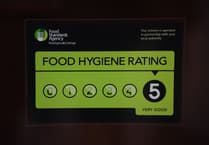AIR quality in Bath and North East Somerset has continued to improve, with new reports showing significant reductions in nitrogen dioxide levels and compliance with national targets.
A continued decline in nitrogen dioxide concentrations across Bath and North East Somerset is shown in two new reports, with the Bath Clean Air Zone Annual Report 2024 finding average levels 40% lower than the pre-pandemic baseline of 2019 – a reduction of 13 micrograms per cubic metre (μg/m3).
The second of the reports, the Air Quality Annual Status Report 2025, reviews and assesses air quality data for Bath and North East Somerset in 2024 and shows all continuous analyser monitoring results were below the annual average objective of 40 µg/m3 for NO2 and particulate matter under 10 micrometres (PM10).
The CAZ report highlights several key findings that demonstrate the air quality improvements across B&NES. In 2024, no monitoring sites within the CAZ recorded an annual average NO2 concentration greater than 36 μg/m³, which is 21 fewer sites compared with 2019.
Average NO2 concentrations for 2024 in the Bath urban area, outside the zone, are 41 per cent lower than in 2019, representing a reduction of 10.4 μg/m³. Compliance within the zone has also improved significantly, with an average of 275 non-compliant vehicles seen each day, compared with 1,742 per day during the launch week of the CAZ in March 2021.
Net proceeds from the CAZ are supporting local reinvestment to sustainable transport projects or schemes which complement wider air quality improvements.
The Air Quality Annual Status Report 2025 gathers data from 167 NO2 diffusion tube sites and three continuous NO2 analysers, with an additional three particulate matter analysers.
Although these results were below the annual average objective, there were four exceedances of the 24-hour mean objective for PM10 at Windsor Bridge in Bath due to nearby construction work, however this still remains within the allowed limit of 35 exceedances per year.
Monitoring results for particulate matter under 2.5 micrometres (PM2.5) were under the annual average objective of 20 µg/m3.
Councillor Sarah Warren, deputy leader and cabinet member for Sustainable B&NES, said: “It is encouraging to see the statistics from both reports show a continued decline in air pollution, resulting in cleaner air and a positive impact on the health of our residents and visitors.
“Notably, the CAZ Annual Report 2024 shows the CAZ is working to improve air quality outside of the zone as well as within it, and that 949 polluting vehicles have been replaced under our financial assistance scheme. This is good news for all of us visiting, living and working in Bath and North East Somerset.”
Bath’s CAZ, launched on March 15, 2021 as the first outside London, was introduced to tackle harmful air pollution from the city’s most polluting taxis, vans, buses, and larger commercial vehicles. The scheme charges drivers of higher-emission vehicles £9 or £100 per day to help reduce pollution within the zone.





Comments
This article has no comments yet. Be the first to leave a comment.